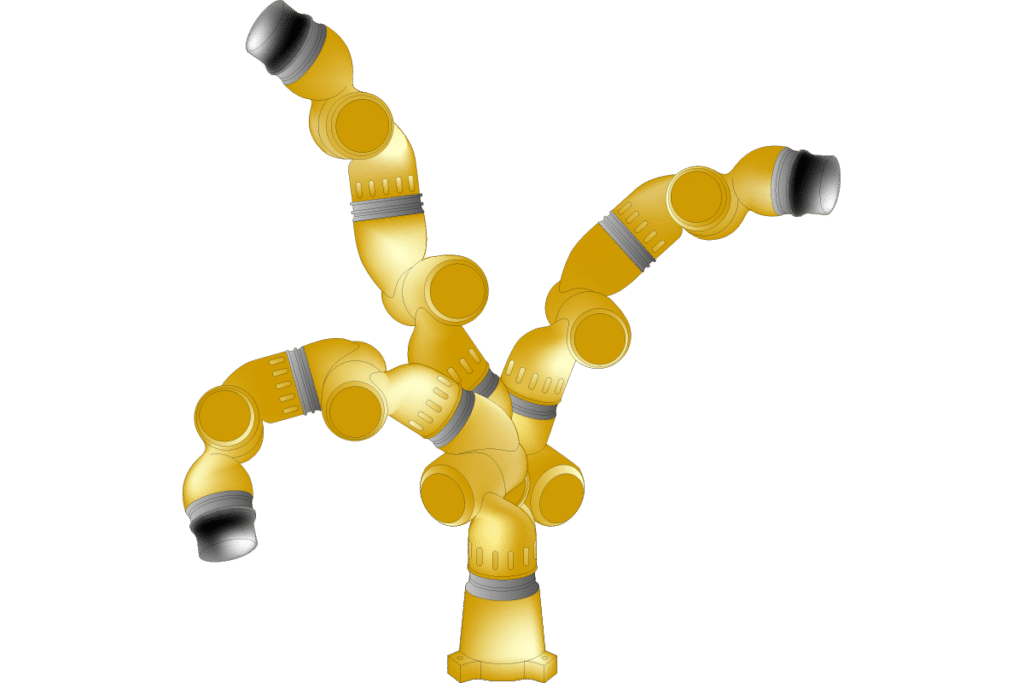Home » Applications » Dexarm Robot Arm: A Robotic Arm for Space Applications
The DEXARM Robot Arm is designed to replicate the size, force, and dexterity of a human arm, making it ideal for space robotics. Its primary applications include servicing orbiting platforms and robotic operations for planetary exploration, tasks traditionally performed by astronauts.
Minimizing mass, volume, and power consumption while maintaining high performance was a key challenge in the development of the DEXARM Robot Arm. To achieve this, ESA encouraged the adoption of innovative technologies aimed at optimizing torque capability, positioning accuracy, and overall efficiency. These advancements were essential to ensure that the system met the demanding requirements of space applications.
The design process placed a strong emphasis on dexterity and resource efficiency. Extensive research and iterative refinements led to an optimized kinematic structure, allowing for smooth and precise motion. Engineers focused on optimizing the joints, electronics, and limbs, implementing multiple design improvements to achieve the best balance between performance, compactness, and durability. This approach enhances the robotic arm’s functionality while keeping it lightweight and energy-efficient.
To ensure seamless integration into robotic systems, the team incorporated all essential features early in the design phase. This proactive strategy allows the robotic arm to adapt easily to various space missions, from orbital servicing to planetary exploration. By balancing performance and practicality, the system stands ready for real-world deployment.
The final result is a highly efficient robotic arm, engineered for qualification and integration in future ESA flight programs. With its advanced capabilities and resource-conscious design, the DEXARM Robot Arm represents a significant step forward in space robotics.
Developed in 2005.







Home » Applications » Dexarm Robot Arm: A Robotic Arm for Space Applications